Rare photos of North Korea at the beginning of the 20th century
By Pictolic https://pictolic.com/article/rare-photos-of-north-korea-at-the-beginning-of-the-20th-century.htmlNorth Korea today is a mysterious country, a reserve of totalitarianism closed to the whole world. Since the formation of this state in 1948, it has plunged into diplomatic and economic isolation, driven by the policy of "independence" of Kim Il Sung. Today, pictures of everyday life in North Korea are a rarity that is met with genuine interest. But it wasn't always like that. For a short period at the beginning of the XX century, after the fall of the "Termite Kingdom" in 1910 and before the division of the Korean Peninsula in 1945, Pyongyang was an open, fast-growing city. Let's take a look at the capital of North Korea of those times, the times when Pyongyang was called Heijo.
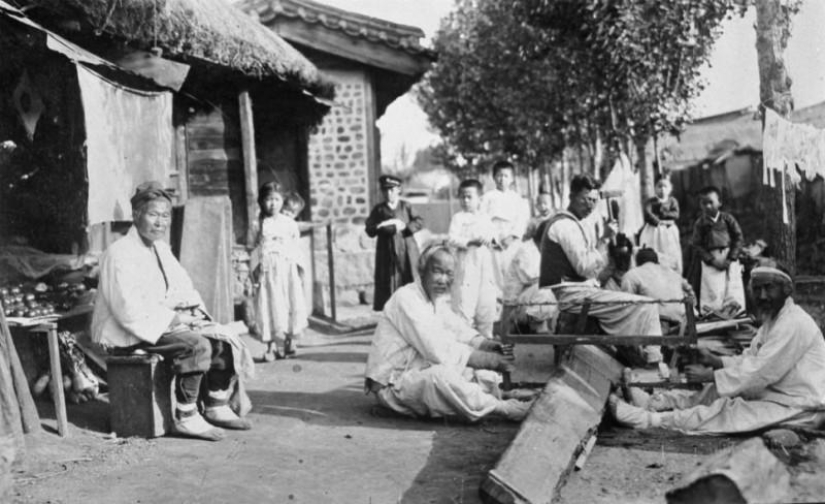
They are usually made from horsehair and bamboo, and they first appeared during the Joseon Dynasty. Traditionally, gat hats were worn to emphasize their high rank.
During the occupation, the Japanese tried to destroy the Korean identity: the Korean language was banned in schools, and citizens were required to use Japanese names.
At the turn of the twentieth century, Christian missionaries opened schools for girls, giving Korean women access to modern education for the first time. When the Korean peninsula split in 1945, North Korea adopted the communist principles of gender equality, placing special emphasis on women's participation in economic production. And this approach is still supported in the country.
More than 80% of the country is covered by mountains, which play a major role in the past and current political life of North Korea. It is believed that Kim Il Sung began his confrontation against the Japanese from the top of a mountain on the border with China. It is also said that Kim Jong Il was born on the same mountain. Due to the country's isolation and underdevelopment, many of these peaks have remained unexplored.
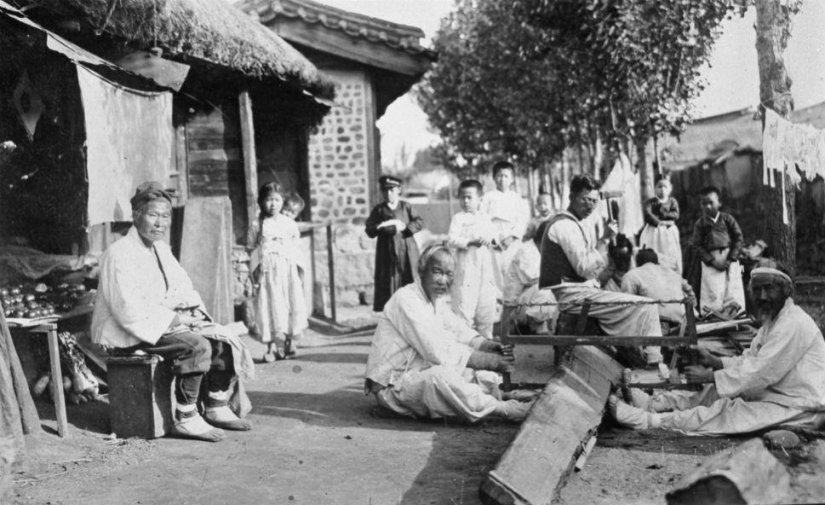
Two men are sawing a log.
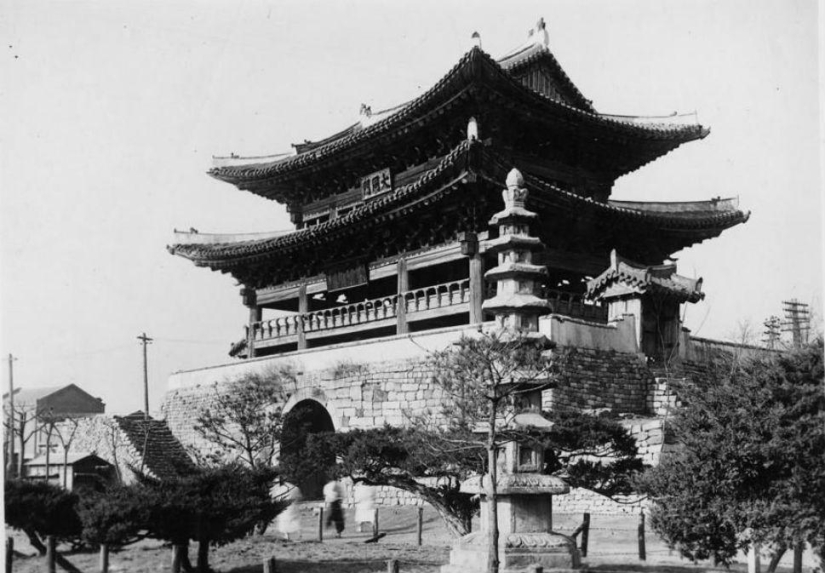
View of the East Gate of the old city of Pyongyang. Today, rare tourists visiting the city stop at the Eastern Gate, which is considered the heritage of the nation. They were first erected in the VI century. The current gates were built in 1635, after their predecessors burned down during the XVI century during the Japanese invasion. This is one of the most ancient structures in the capital of the DPRK, which remind that once upon a time Pyongyang was a traditional Asian city, not a sanctuary of totalitarianism.
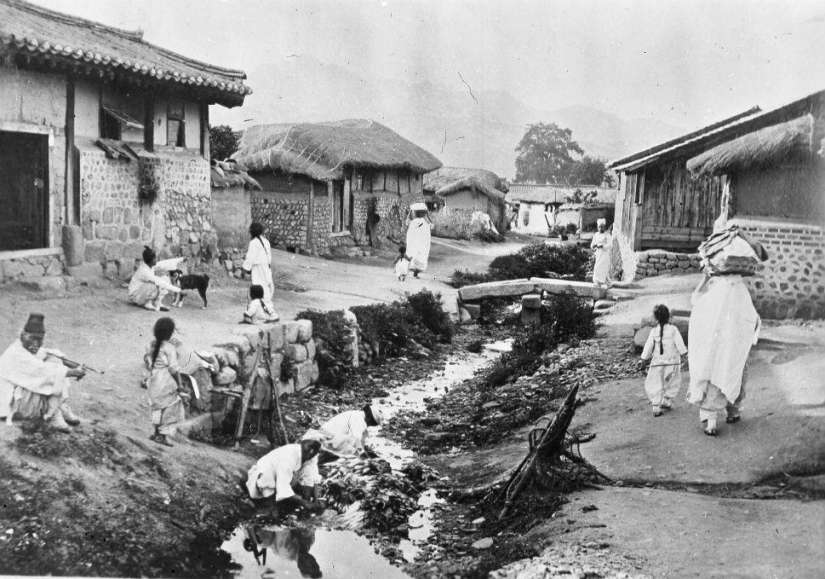
Pyongyang Street. Under Japanese colonial rule, the city's population exceeded 200,000 people. And only after the Korean War (1950-1953) Pyongyang has grown into the city we know today - with wide boulevards and majestic monuments.
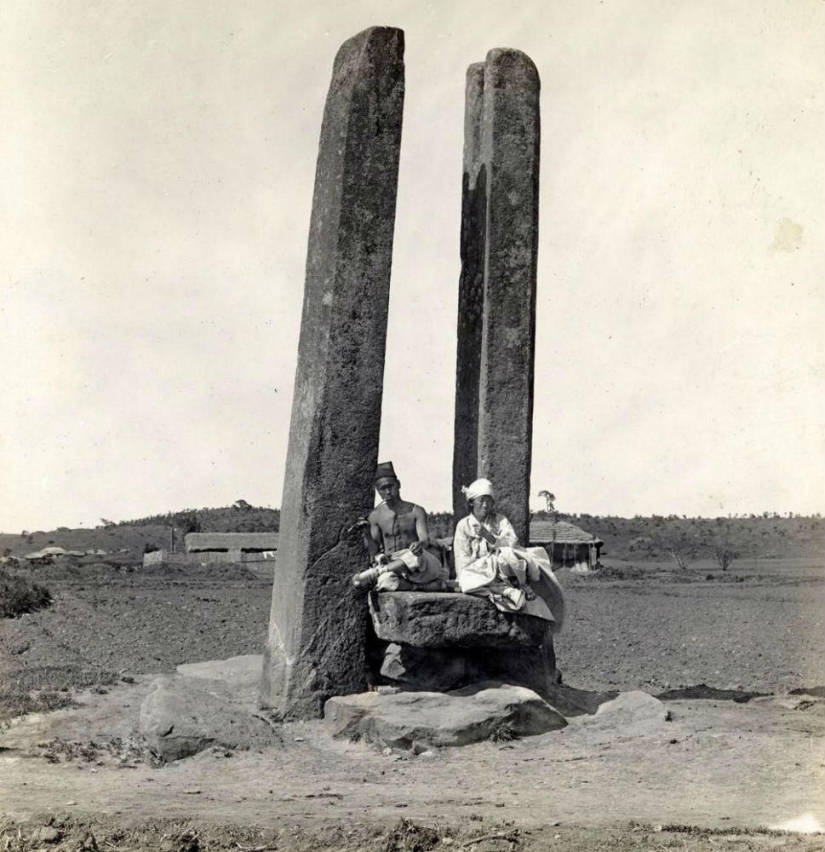
People are sitting on "anchor stones" in fields near Pyongyang. According to Korean folklore, Pyongyang is a boat floating in the waters of the Taedongan and Potong Rivers. Some sources claim that the city was supported by two huge stones in order not to float away, while others claim that these monoliths served as masts of a "floating island city".
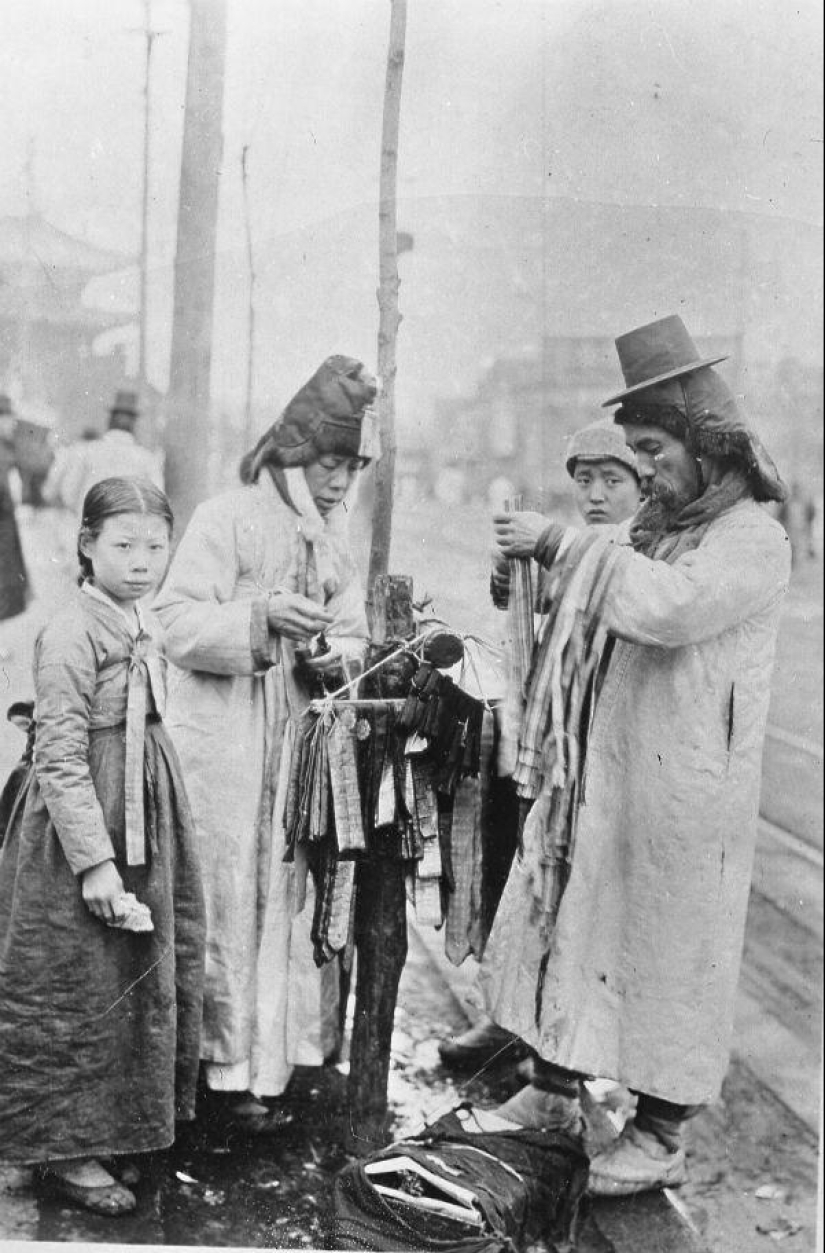
A merchant on a busy street in Pyongyang.
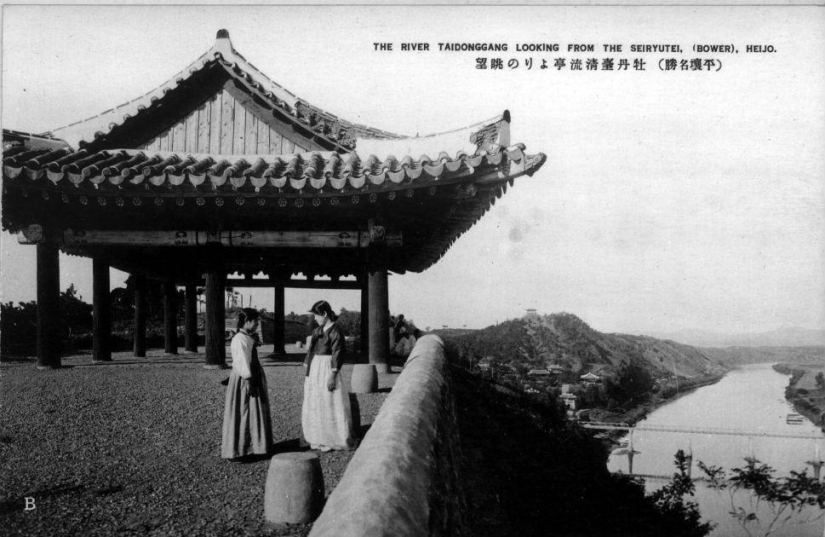
A postcard with Japanese hieroglyphs depicting two women at a pavilion on the banks of the Taedongan River. It is said about these cliffs that they "seem to have been created with one stroke of a giant sword." Cliffs have their own special place in the capital's folklore. According to one legend, they appeared at the request of a young farmer: a boy saved a carp, who offered him to fulfill his every wish, and the boy asked to change the flow of the Taedongan River so that it no longer flooded the farms of his native village.
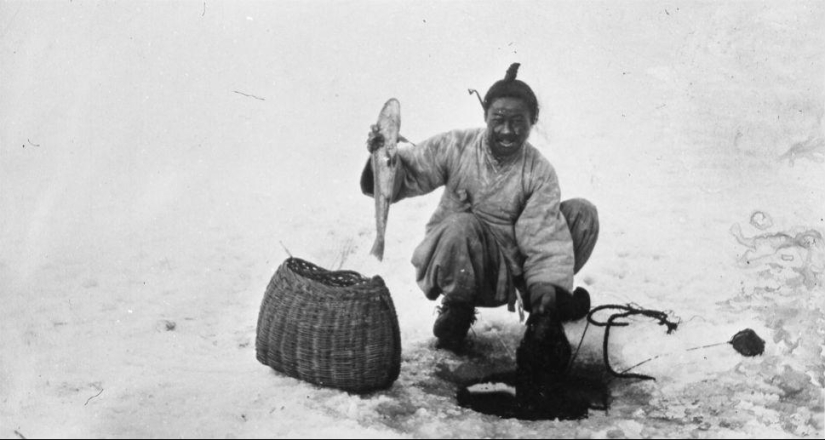
A man caught a fish on a frozen river. Trout soup from the Taedong River is a typical Pyongyang dish, and ice fishing remains a popular Korean activity even now. South Korea even hosts an annual winter fishing festival.
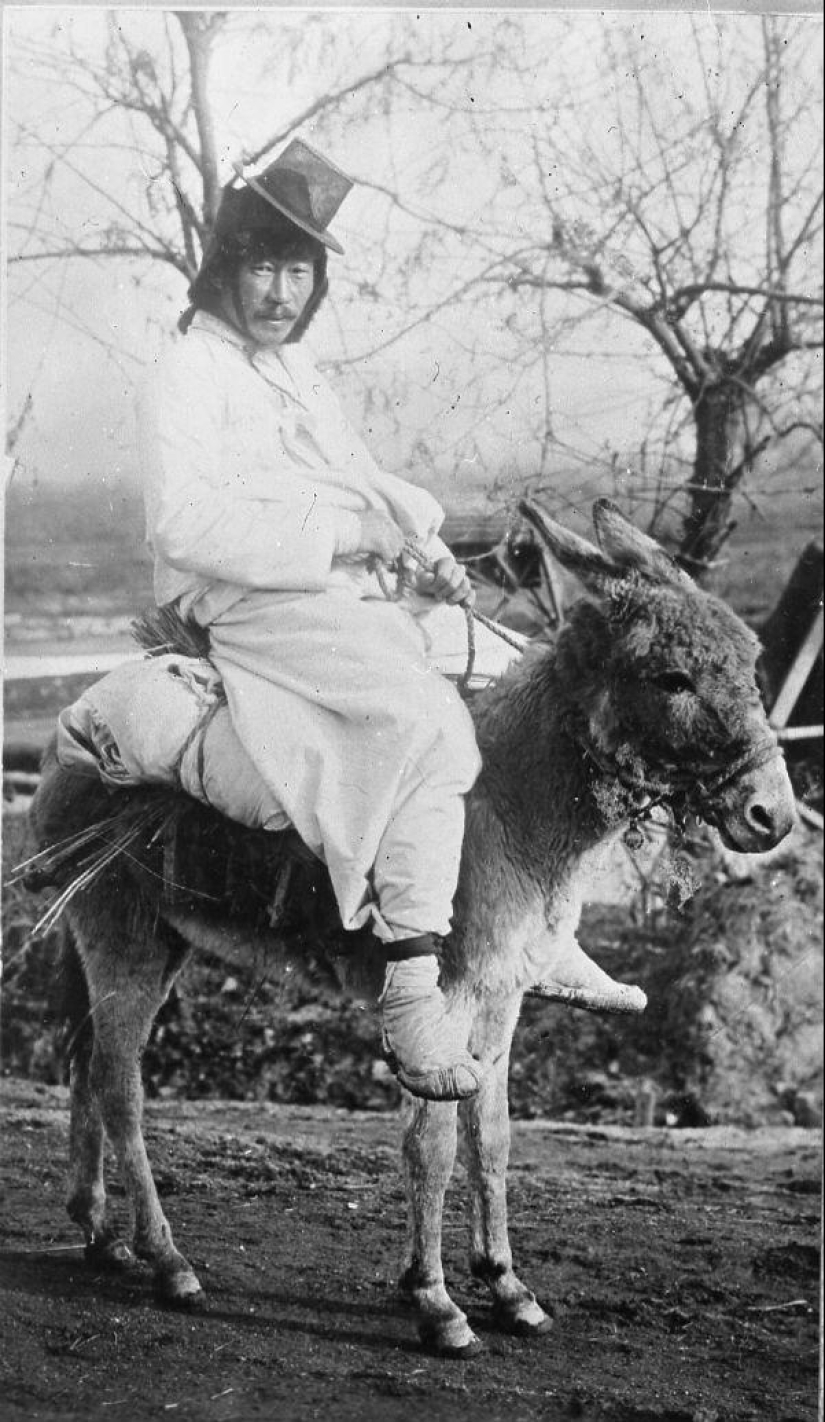
A man on a donkey on a wasteland background in a traditional Korean hat called gat.
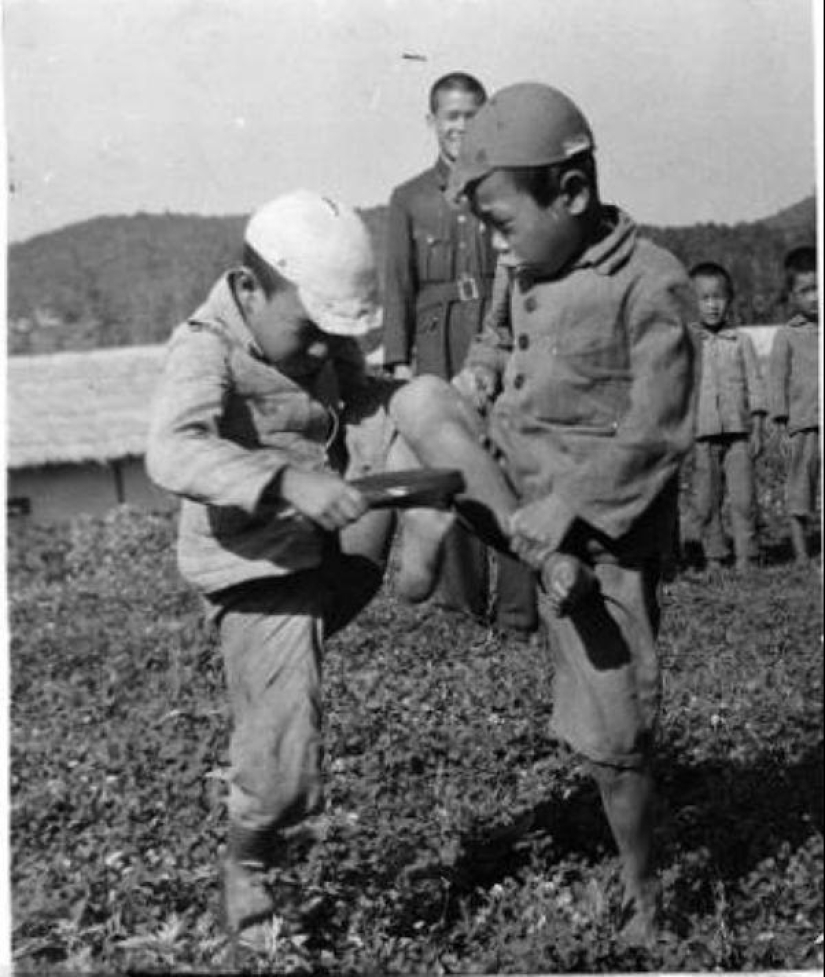
Two boys are playing in front of the school.
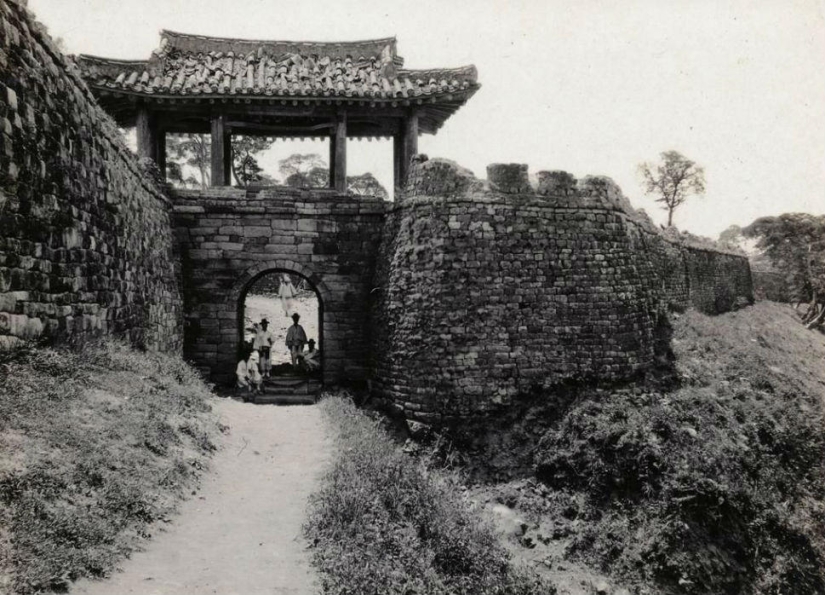
The men gathered under the Gate of the Seventh Star. This name refers to the constellation of the Big Dipper, which points to the North Star, and the gate is located in the north. At the beginning of the twentieth century, some parts of the ancient city were razed to the ground to make way for tram lines, but many gates were preserved as historical monuments. The gate of the Seventh Star still stands in Moran Park in Pyongyang. The first shots, which marked the beginning of the land battles in the Russian-Japanese War, thundered from this gate.
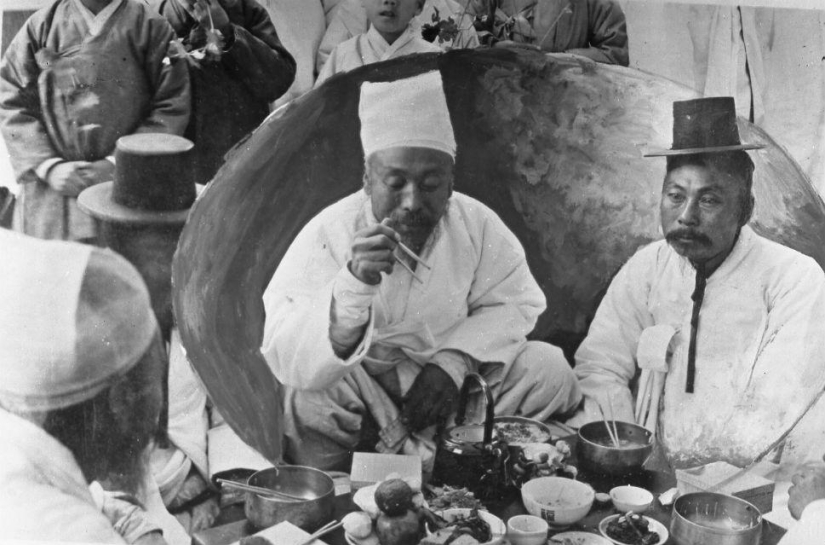
A man eats a traditional Korean dish consisting of small portions of vegetables and rice. Before the Japanese occupation, the peninsula was divided into administrative provinces, which retained their differences in national cuisine. Today, food in Pyongyang consists of grains and meat – what you need to survive the harsh winter. There are food warehouses all over the country.
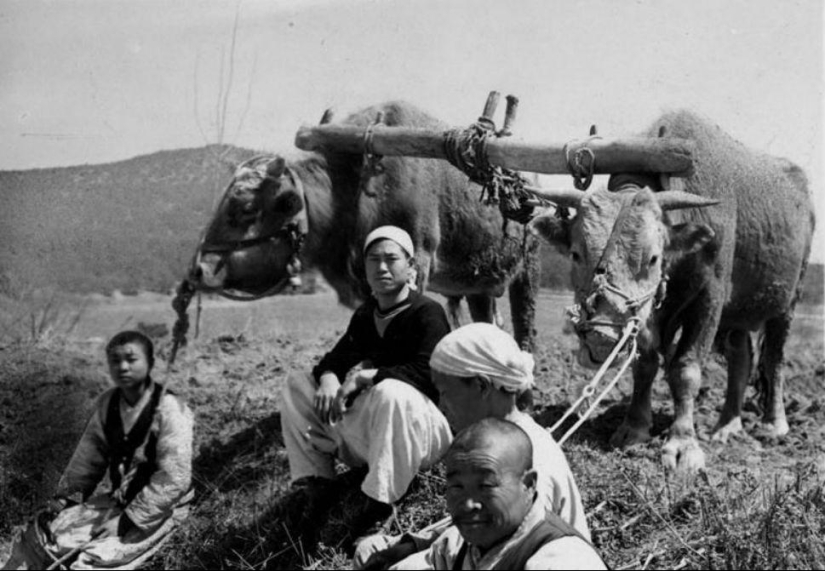
Farmers in the field with their bulls. Under colonial rule, North Korea's agricultural sector was aimed at maintaining Japan's food resources. Today, the country, in which less than 25% of arable land remains, also depends on agriculture. Military personnel are even forced to work in the fields. According to one of the soldiers: "North Korea cannot grow crops and livestock without an army... Our main task is to eliminate the problem of malnutrition."
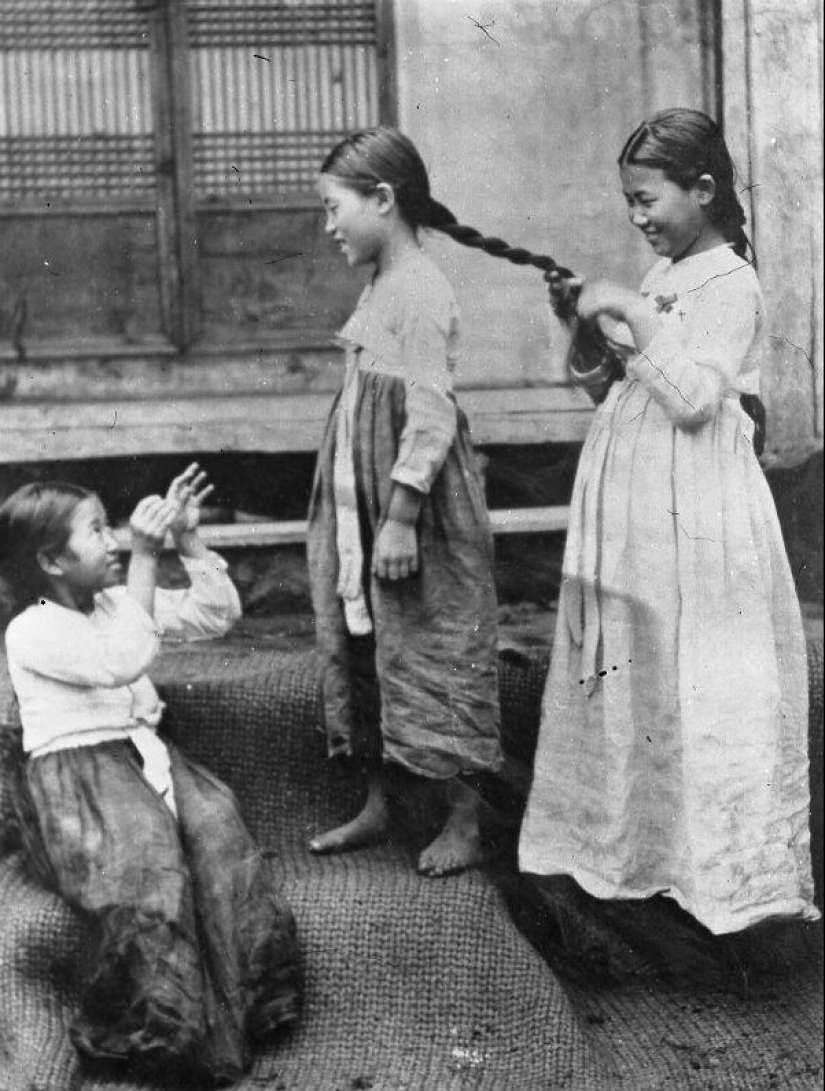
Three girls are playing on the thresholds of the building.
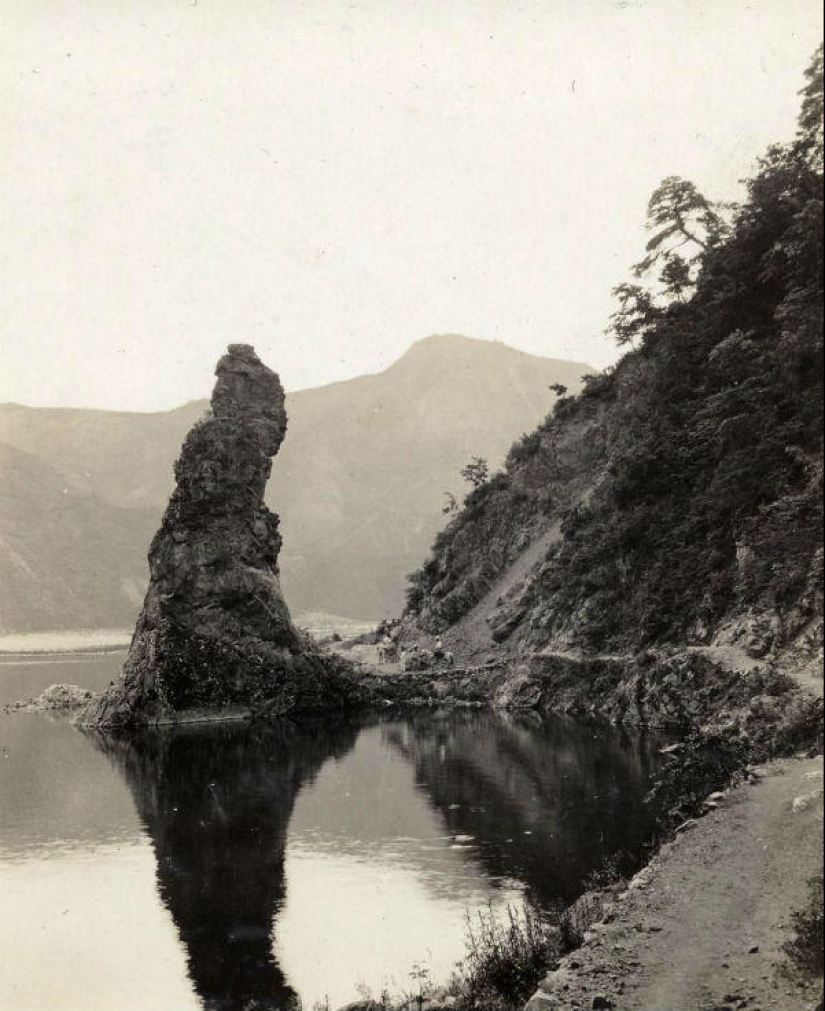
Beautiful scenery around Pyongyang.
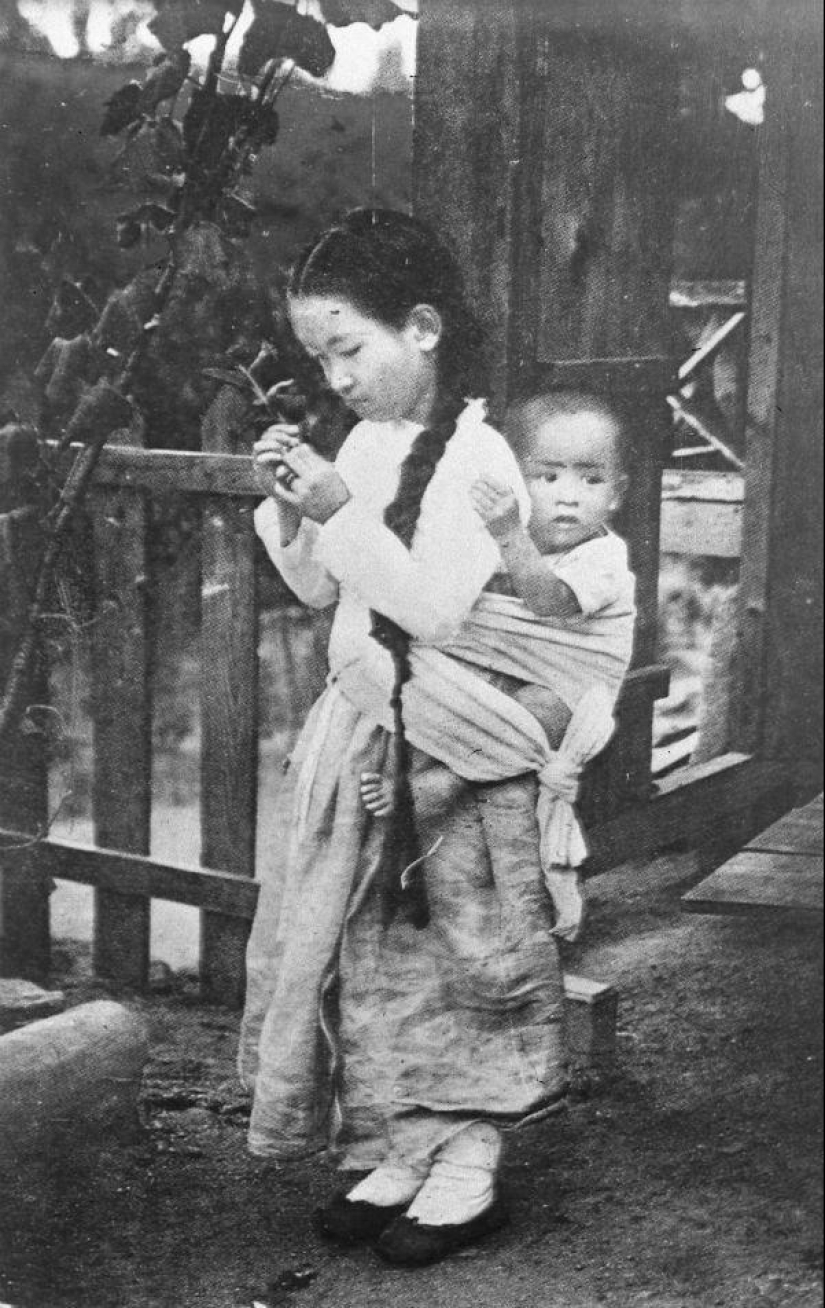
A girl with a brother on her back.
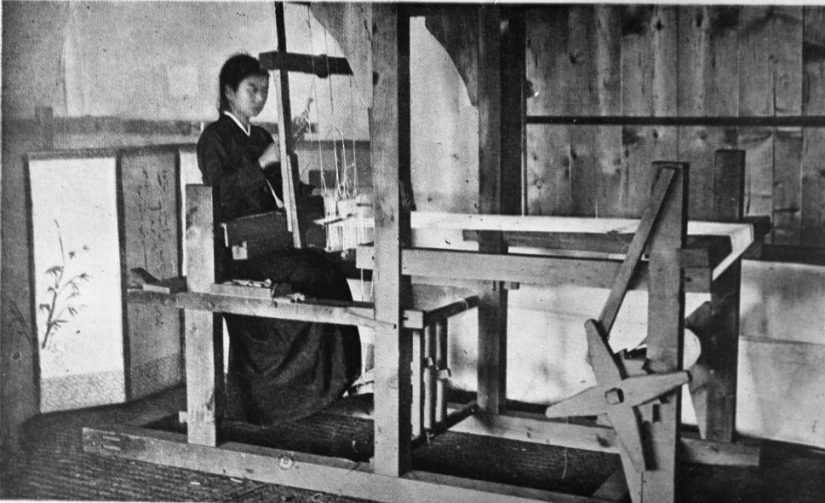
The woman at the loom. Both then and now, North Korea's economy relied heavily on the textile industry, which was one of the country's main export areas. Like many other industries, it suffered as a result of the division of the country: for example, the European Union imposed quotas on the import of textile goods from North Korea.
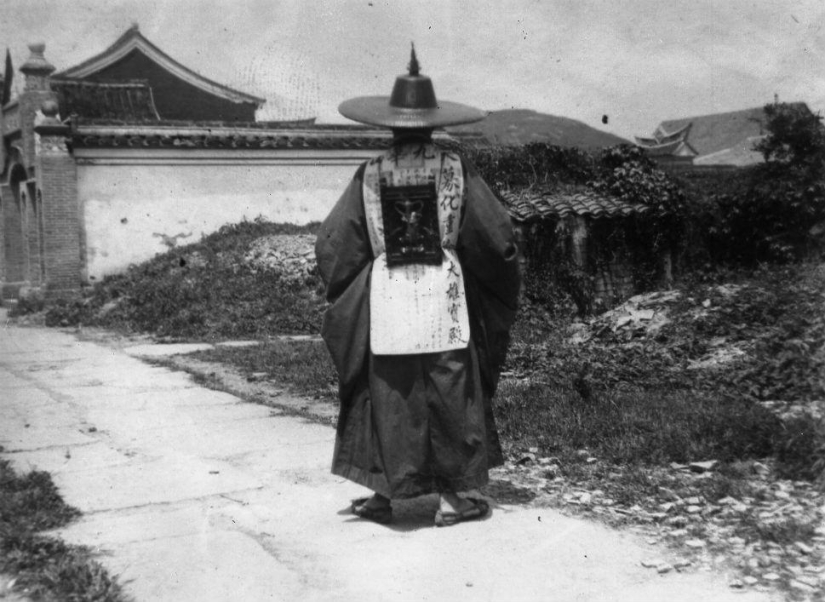
A man on the street in Pyongyang.
Recent articles

This is an amazing photo project of Mike Harvey: it takes people in his car, and photographs them at the same time, we are about to ...

Now the shelves are bursting with an abundance of different types of products and I think they can see literally EVERYTHING, ...

Quality is the promotion of products or services. Is beautiful and advertising, which can be perceived as a separate art form — ...